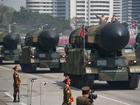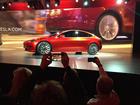
Public safety and public services are key elements of a smart city. Whether a city is seeking smarter streetlights, more efficient waste removal, or gunshot detection, there are smart city products that stand out more than others. Here are some of the best and most useful devices that were used in smart cities around the world in 2016 and that will be vital in 2017.
1. Bigbelly
Bigbelly is a smart waste and recycling system that has been deployed in all 50 US states and in 50 countries. It provides a solar-powered compacting waste bin that allows for up to five times the amount of waste as in a traditional bin, and it also alerts the appropriate city department when it needs to be emptied, according to Leila Dillon, vice president of marketing for Big Belly.
This means that the number of trash bins in a city can be reduced by 70-80%, which makes the streets more aesthetically appealing, and it reduces the rodent population.
Philadelphia, San Diego, Los Angeles, New York, and Chicago are among the cities that use Bigbelly waste bins.
2. ShotSpotter
Gunfire is undoubtedly one of the most dangerous aspects of urban life. When a gunshot is heard, it's not always reported.
But sound sensors, whether standalone, from a company such as ShotSpotter, or added to a smart streetlight, can detect gunshots and automatically report it to a city's 911 department without depending on citizen involvement. The software can also determine how many shots were fired, and how many shooters are present, which can assist police officers who respond to the call.
Shotspotter has been reported to hone in on the gunshot location within a 10-feet radius. Current by GE has enabled the sensors it places on its smart streetlights to use the Shotspotter technology. If a city installs a smart streetlight sensor from Current by GE, it's already set up for Shotspotter, and the city simply has to arrange service with Shotspotter.
SEE: Gunshot detection technology as part of smart city design (TechRepublic)
3. Digital kiosks
A digital kiosk gives information about restaurants, retail stores, and events in the immediate area. It also provides mapping for visitors, and can sync with a mobile phone to give additional data as needed.

This is one of the 25 digital kiosks in place in Kansas City, Mo.
In Kansas City, Mo., there are 25 digital kiosks installed within a 2.2-mile area as a living lab to test smart technology for the city. The city worked with Cisco to install the smart city tech and digital kiosks.
4. Smart streetlights
Connected LED streetlights are the easiest way for a city to add smart tech. One benefit is reduced crime, because the lights automatically brighten when there are multiple people in the area, and dim when no one is around.

Los Angeles has replaced old streetlights with smart versions.
The ROI is a no-brainer, with the LED lights saving more on energy costs within a few years than it costs to purchase and install them. In Los Angeles, the city saves nearly $9 million annually on utility costs as a result of its decision to spend $57 million to convert nearly 80% of its 215,000 old sodium-vapor streetlights to LED versions.
SEE: How LA is now saving $9M a year with LED streetlights and converting them into EV charging stations (TechRepublic)
5. Parking sensors
Imagine driving through a city, and accessing a mobile app that tells you when a parking spot is available. Parking sensors make this happen by sending a signal that indicates whether a parking spot is taken.
European cities were early adopters of this technology. In Paris, France, the average resident spends four years of their life looking for a parking spot, according to Cisco. With widespread use of parking sensors, traffic in Paris has dropped dramatically. Kansas City is one of the first US cities to add parking sensors, but many other US cities are considering it, or testing it in small areas.
Also see
- Smart cities: The smart person's guide (TechRepublic)
- Smart cities: 6 essential technologies (TechRepublic)
- The world's smartest cities: What IoT and smart governments will mean for you (TechRepublic)
- Palo Alto CIO: What are smart cities? (ZDNet)
- 6 ways cities will become smarter in 2017 (TechRepublic)
- Illinois seeks to become the nation's first smart state (TechRepublic)
- Columbus, Ohio: What's next for the DoT Smart City Challenge winner (TechRepublic)
- Pittsburgh's smart city efforts include autonomous driving, open data, and renewable energy (TechRepublic)
- IT leader's guide to the rise of smart cities (Tech Pro Research)
- Louisville and the Future of the Smart City (ZDNet)
- How to finance a smart city project (ZDNet)
Full Bio
Teena Maddox is a Senior Writer at TechRepublic, covering hardware devices, IoT, smart cities and wearables. She ties together the style and substance of tech. Teena has spent 20-plus years writing business and features for publications including People, W and Women's Wear Daily.





